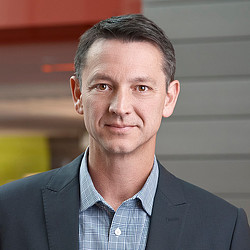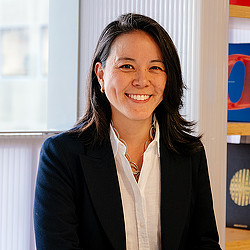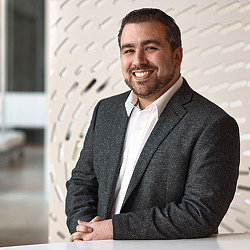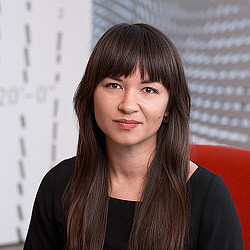Trends to Watch Shaping the Future of Mobility and Transportation
January 09, 2024 | Q&A with Dylan Jones, Carmen Cham, Jaymes Dunsmore, and Midori Mizuhara
Editor’s Note: This blog is part of our Design Forecast blog series, looking at what’s next in 2024 and beyond. Here, we sit down with Dylan Jones and Carmen Cham, global leaders for Gensler’s Mobility & Transportation practice; Jaymes Dunsmore, Gensler Mobility Lab leader; and Midori Mizuhara, a studio director in Gensler’s Cities & Urban Design group in Los Angeles, to discuss what’s next for the future of mobility and transportation.
How are new technologies influencing the future of mobility?
Dylan Jones: Technology is disrupting the way we consume experience, which is creating new demands and requirements on our transit mobility systems that we need to respond to. It’s also bringing along a plethora of mobility options that people are experimenting with. For example, the rise of micromobility, which is technology-driven to a degree because of the rise of electrification and batteries that can miniaturize propulsion into smaller devices, can help people as they live more locally rooted lives.
How are changes in work going to impact mobility and transportation in the next several years?
Carmen Cham: We focus on the return to the office, but it’s not necessarily that people don’t like where they work — it’s more that they don’t like getting to where they work. We’ll be seeing employers start to really think about change management and the design of workspaces by asking their employees, how do they get to work? And how can we make that easier for them?
Dylan: Work has untethered from place, and the commute is a huge driver in people’s decisions. Traditionally, there have been efficiencies in locating a large collection of people in a large building in a commercial urban core. Whereas, in the future, if you’re drawing employees from a large area, it might make sense to have more locations where people can drop into. It changes the way C-suites and strategy groups are thinking about real estate strategies as work goes mobile.
We’re also looking at the experiences people want to consume when they’re on the move. In our collaboration with BMW, they’re thinking about how their automobiles might support a work experience from the car itself.
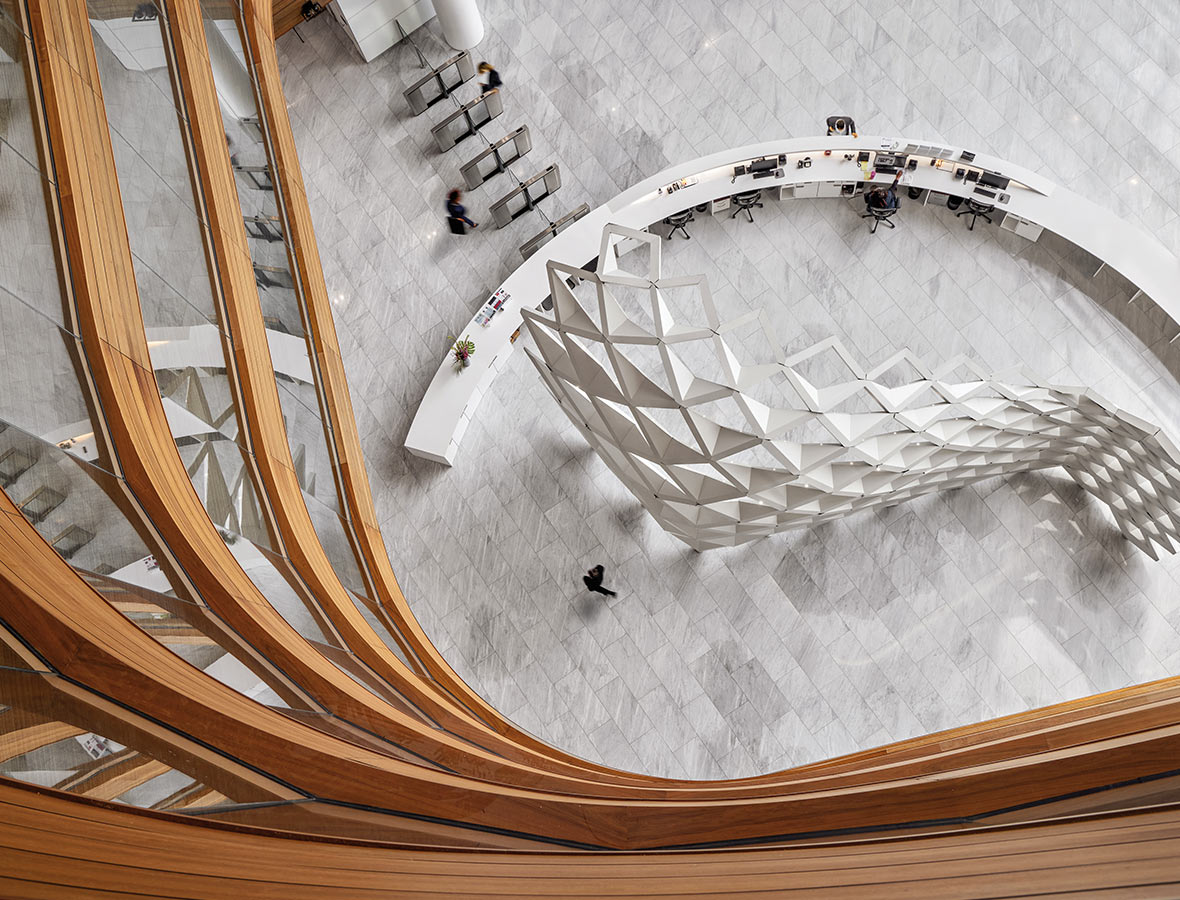
Why isn’t charging infrastructure keeping pace with demand for electric vehicles?
Dylan: Governments are driving regulations towards the electrification of vehicles. However, our charging or utility infrastructure is woefully behind in meeting the needs of fleets as they go electric. Right now, 20% of all cars sold in the California market today are electric. If you build a new office building, you have to provide 10% of electric vehicle charging stalls. Our code isn’t keeping up with the market right now.
Midori Mizuhara: When we look at survey data on why people are not buying electric vehicles, a top concern is anxiety about where they are going to charge it. So, the availability and quality of that infrastructure is as big of an issue as the actual car.
Dylan: Electrification is very different than refueling. If you go into a gas station, you might get a candy bar, because you’re only there for 60 seconds. But if you go into a fast-charging station and you’re there for 20 or 30 minutes, you might be able to take a Zoom call, do a quick fitness class, or buy something more than just coffee. So, the programmatic synergies that might happen at recharging nodes could offer a lot of opportunity for us as designers.
Are you seeing any differences in global markets around electrification?
Dylan: China and parts of the European continent are more advanced in the electrification of mobility. But there’s a lot of differentiation within the U.S. For example, California is way ahead of any other state because of state regulations and local consumer trends.
Jaymes Dunsmore: Vehicles are getting heavier, and that’s going to continue with electric vehicles. We need to redesign our cities to make them safer because there’s really a crisis with pedestrian fatalities. And automation is creating another level of challenge. In San Francisco, they’ve been expanding Robo taxis, and they’re holding up emergency vehicles and creating challenges over public space. The technology is progressing faster than cities can respond.
Public transit usage has declined across the globe since the pandemic. How can it bounce back?
Carmen: Transit agencies are focusing on how they keep people safe. With the loss of daily commuters, there are fewer people using the train. But ridership has gone back to pre-pandemic levels in Seattle, and they’ve been steadily going up everywhere else. Major global cities have robust and resilient public transit systems, and we need to understand those operational challenges and how communities are using these systems as part of a larger ecosystem. As designers, we have to do more to inspire people to get out of their cars and choose more sustainable and resilient modes of transportation.
Jaymes: If people work from home just one day a week that can be a 20% decrease in ridership during the peak period. A lot of transit agencies are seeing faster recovery of weekend and off-peak service than they are for their peak commuter service. We’ve found that people are using transit to go to social events. There’s been a recent trend called “the Taylor Swift effect,” where transit agencies are seeing a boost in ridership, building off of her tour. Transit agencies need to really think about how they shift their service.
Carmen: The most successful agencies are focused on the passenger experience — they do the most outreach, have boots on the ground, and really understand where people are coming from. That’s how you build a good ridership base, and how you know where to pull the levers to make the system better.
Jaymes: One of the key findings in Gensler’s City Pulse Urban Mobility Report was that transit needs to provide the right experience. In surveying people in 30 cities around the world, more than two thirds said they’d rather prioritize expanding transit than expanding freeways or electric vehicles. To dig deeper, the Gensler Mobility Lab conducted a series of focus groups in 2023 with riders in three American cities — Atlanta, Los Angeles, and Washington, D.C. — to understand first-hand how riders’ experiences and needs are changing post-pandemic. We are using our findings to inform designs that aim to improve the experience of public transit to help attract riders back to the systems and the urban centers they serve.
Why is mobility so intertwined with how we plan and experience cities and communities?
Midori: How we plan our mobility systems is impossible to untangle from the way that we design and develop our public spaces. As planners, we need to consider these spaces that connect our multimodal journeys and how these spaces shape our neighborhoods and urban fabric.
Jaymes: There’s an increasing awareness of how mobility impacts urban economics, but it also impacts health, racial disparities, and social justice issues. There’s been an increasing focus on freeways being built through lower-income neighborhoods that have health impacts on those communities.
Can you talk more about the connection between mobility, equity, and health?
Jaymes: Historic inequities in our mobility system continue to impact communities today where there are higher rates of asthma and other diseases among lower-income communities along freeway corridors. There’s also an equity issue in terms of the costs of our transportation system and vehicle ownership. If you don’t have a vehicle, your access and opportunities are severely limited. So, building housing in the right places that support transit needs to be part of the solution.
Midori: Historically, the process of creating new mobility systems has been largely top down. This has had negative consequences, with environmental justice issues for lower-income, typically communities of color, who have borne the brunt of those decisions. Recently, these inequitable outcomes from our legacy urban transportation systems that have divided communities have become top of mind. There’s been a push from the federal, state, and local level to issue grants to reconnect communities through physical design and programming. There’s much more of a focus on partnering and co-creating with local community groups and deepening engagement.
Dylan: It’s important to design our streets and our pathway networks to support the ability of people of different ages, abilities, and socioeconomic backgrounds to have access to as many different modes as possible so that they can access jobs and experiences.
What kind of key partnerships can Gensler make with governance and with developers?
Dylan: We’re working with industry partners, such as BMW, to help them think through what electrification means. What are the needs of the car in a changing landscape, where cars are needed to operate in different ways? They’re collaborating with us because we bring a perspective on cities, and we help them around what some of these new architecture-mobility interfaces might be in the future.
We’re also leading a new research effort on the experience at electric charging stations. If you talk to people who own electric cars today, they complain about the experience. They plug in, and they sit in their cars. So, we’re doing research to uncover what those experiences and needs are. In five years, we’re going to see EV charging stations that are combined with programs that create place typologies that don’t even exist today.
Jaymes: We’re partnering with cities and transit providers to redesign streets, stations, and other public spaces to enhance mobility. For example, we’re working with the City of Los Angeles to transform Hollywood Boulevard from an auto-oriented roadway into a multimodal corridor with dedicated bus lanes, bike lanes, and expanded pedestrian space. We’re also working with LA Metro to redesign 7th St/Metro Center Station, the city’s downtown transit hub where four lines connect, to improve passenger comfort and safety. Both of these projects are intended to revitalize two of L.A.’s great urban neighborhoods for residents and visitors in advance of the LA 2028 Summer Olympics.
Midori: We also partner with local community-based organizations (CBOs) to co-create more equitable project outcomes. These partners are experts in their community’s lived experience and help shape how we’re authentically engaging the public and creating projects that are reflective of community needs and aspirations.
For media inquiries, email .

